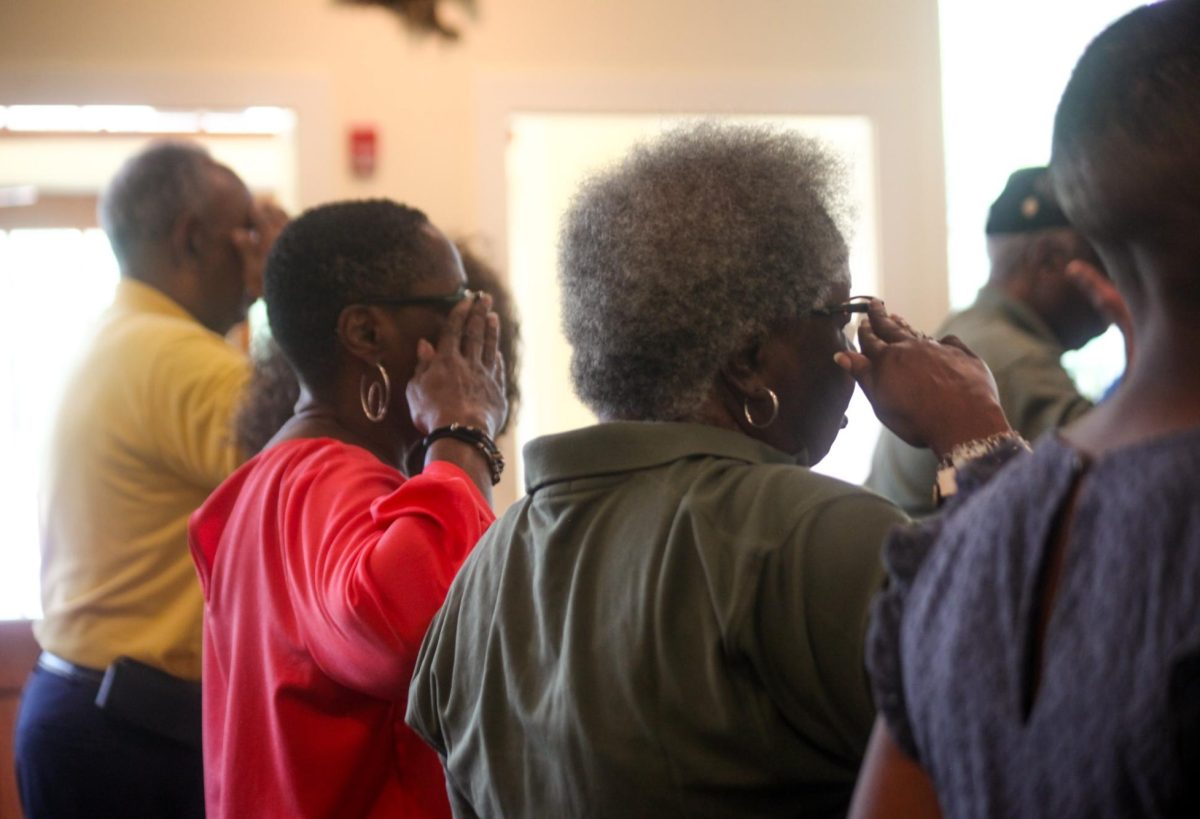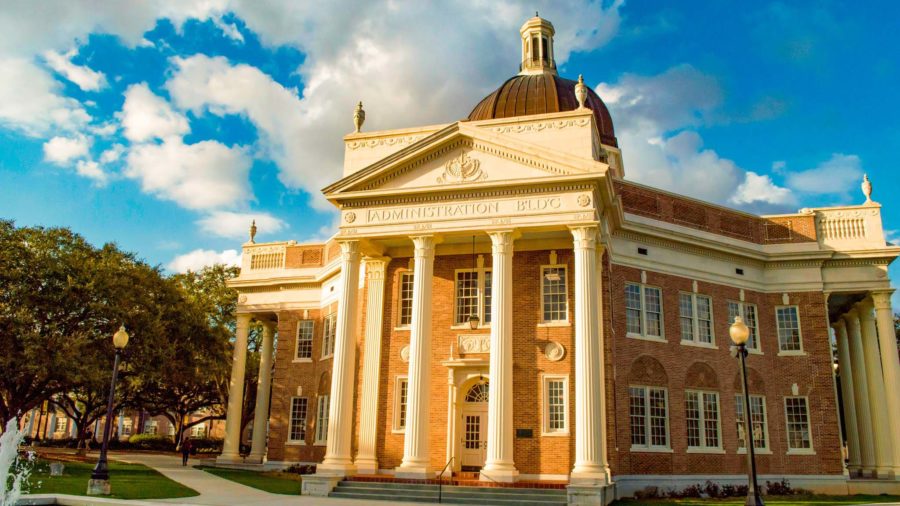Editorial Letter #1 – Max Grivno, History, Southern Miss
On Sunday, August 20, advocates of the Mississippi state flag and those favoring its removal gathered on our campus. There, among the protesters, was retired history professor William K. Scarborough. Explaining his decision to join the event, Scarborough declared, “We’re protesting the fact that the president [Dr. Rodney Bennett] took the state flag down without consulting anybody.” The decision to remove the flag was, he informed a reporter from the student newspaper, part of an effort “to eradicate every vestige of the heritage of the Confederacy.” “I’m not interested in reconciling with anybody,” Scarborough concluded, “I’m just angry – I don’t like ‘em, I hate ‘em if you wanna know the truth. They’re very unreasonable.”
It is not the first time that Dr. Scarborough has advanced this argument. In an open letter published recently in several Mississippi newspapers, he insists that he is “proud of my Confederate heritage and proud to live in a state that still recognizes that heritage in its state banner” and denounces what he sees as a “concerted nationwide campaign by certain groups and individuals to demonize the Confederacy and … to eradicate every vestige of the Confederate heritage by removing Confederate statues and monuments and changing the names of buildings, streets, and schools throughout the South. I bitterly resent this onslaught against my heritage.”
I have known Scarborough for almost a decade. He chaired the committee that brought me to this university and I once had the utmost regard for his decades of service to this institution. While I stand among those he hates, I do not reciprocate that feeling. Still, I must disagree with him in the strongest terms possible, for he has presented an argument that rests on a very narrow historical foundation.
Dr. Scarborough believes that those people who protest against the current flag are attempting to erase history. I disagree. The question is not one of escaping or obliterating history; that cannot be done. It is, rather, a question of how we reckon with the past so that we can face our shared future with confidence, hope, and perhaps a greater sense of unity than we now have. Dr. Scarborough is wrong when he accuses the protesters of being unreasonable. To associate Confederate imagery with slavery and the preservation of white supremacy is to do nothing more than to take the rebels at their word. By now, many in this state have read the statement from the Secession Convention declaring that, “Our position is thoroughly identified with the institution of slavery – the greatest material interest in the world.” This is, however, mild compared to some of the other statements issued during the fevered secession winter of 1860-61.
Soon after Mississippi seceded, the state dispatched W. L. Harris to address the Georgia legislature and to encourage that state to leave the Union. Harris did not mince words about why white Mississippians had revolted: “Our fathers made this a government for the white man, rejecting the negro as an ignorant, inferior, barbarian race, incapable of self-government, and not, therefore, entitled to be associated with the white man upon terms of civil, political, or social equality.” Harris claimed that rather than accept “submission to Negro equality,” Mississippi had made the fateful decision to secede.
Scarborough and many like him suggest that the Confederate symbol emblazoned on the Mississippi flag represents “Heritage, Not Hate.” This is an odd argument to hear from a man like Scarborough, who once worked with the Citizens’ Council to prevent the integration of our schools and who seems unrepentant in his racial views. Heritage often makes for bad history, and the history proffered by Dr. Scarborough is no exception. While he observed, correctly, that the states of the Deep South left the Union to preserve slavery, he added that “once the war began the overwhelming number of Confederate soldiers, most of whom were non-slaveholders, fought to defend their states, homes, and families from the invading federal armies.” His own ancestors were “dirt poor” North Carolina farmers who, despite not owning enslaved people, were willing to shoulder arms in the rebellion. But Scarborough wants to sip from history of the Confederacy without drinking fully of its dregs.
Where Scarborough sees a heritage worth celebrating, others see an offensive and painful vestige of the Old South. If he would remind us of the histories of his forbearers, then I would invite him and others to consider the story of Elvira Boles. If the history of the Confederacy must be written on our flag, on our state buildings, and on monuments erected on public lands, then a simple sense of fairness suggests that we find ways to memorialize the lives of people like her. This is her story.
__________
“That’s the reason I ain’t no-account,” she sighed to the interviewer from the Works Progress Administration [WPA] who visited her in El Paso, Texas, in the 1930s, “Ise worked to death.” Elvira Boles had groaned under almost unbearable burdens during her ninety-four years. Work, death, and grief had all taken their tolls. She was born the property and the illegitimate child of Levi Ray of Lexington, Mississippi, sometime in the 1840s. The people who enslaved Boles never told her age, but the 1850 federal census shows that Ray, then a twenty-six-year-old grocer from Georgia, owned a black woman who was one year his senior, two mixed-race girls aged nine and four, and an infant black girl. Assuming that the eldest child was Elvira Boles, and that at least one of her sisters was also fathered by Ray, it is understandable why her earliest childhood memories were of the smoldering resentment—the hatred—that her mistress carried toward her young chattels. Ray had married Araminta Reeves in January 1841 and their first child, Alice, was born that year, probably within months of her enslaved sister. “I just member my first marster and mistress cause she don want me there,” Boles recalled. She was sold at the bidding of the embarrassed and scorned Araminta, and the memory of that sale was another of her earliest recollections. “Dey tuk us to where dere was a heap o’ white people down by the coaht-house,” Boles said, “and we’d be there in lots and den de whites ‘ud bid fo us.” Boles fell to a man named Elihu Boaz (sometimes spelled Boles), a farmer and brick-maker from Virginia. She began work washing dishes for his family, but soon moved to the fields and brickyard. Boles did “evvy thing a man could do.” From daybreak to “quite a while” after sundown, she cut timber and ploughed, hauled bricks—“six bricks each load all day”—and she stoked a blazing furnace for three years. “Hard wok,” she remembered, “but God was wid me.” Although Boles thought that the man who reaped the rewards of her backbreaking toil was “good to his slaves,” she stated that he never flinched from violence. “He’d not be brutal, but he’d kill em dead right on the spot.”
In the midst of all this, Boles found the room in her heart to marry, start a family, and nurture her faith. She was about seventeen when she married another man enslaved by Boaz. Their owners and the other slaves did what they could to make the wedding festive. “Dey give me a dress, and dey had things to eat—let me have something like what you call a party.” There were other breaks in the unending routine. “Sometimes dey let us have a party,” she recalled. “The white people give us meat and stuff,” and the enslaved would invite their friends, sweep the yard, and dance through the night—then “go to wok next day.” Between stints in the factory and fields, Boles and the thirty-five other people on the plantation retired to six houses, crude affairs made of logs with dirt floors and the occasional planking. She did what she could to make it a home, often working late to make “pretty quilts” for her family. Still, time for her children and husband had to be snatched around the edges of long, grueling workdays. “I’d leave mah baby crying in the yard and I’d be crying,” Boles remembered, “but I couldn’t stay … I couldn’t notice the time, but I’d be glad to git back to my baby.” Work was not the only strain on the family that Elvira Boles and her husband were making. She may have fallen victim to the same kind of sexual predations as her mother. “I’se one of em, iffen dey had a pretty girl dey would take em,” the light-skinned woman recalled, “and my old child, he boy by Boles, almost white.” Despite, or perhaps because of, these trials, Boles clung to her faith. At night, she and the other enslaved people crawled on their bellies to worship on “de ditch bank,” once suffering a punishment of one hundred lashes to lay their burdens down.
Elvira Boles lived to the witness the death of the world that she and her kinfolk had built. During the war, Boles’ owner had sent her and her family to Texas with his children, declaring that “we could neva be free iffen dey could git to Texas wid us.” The journey from Mississippi had been marked with suffering. At the outset of their trek, Boles’ enslavers had attempted to terrify them, warning that Union soldiers were bent on killing slaves and had driven them from their homes with nothing but their clothes. “Take your little bundle and leave all you had in your house in Mississippi,” the slaveowners had barked before forcing their human chattels to “run away to keep us frum being free.” Boles remembered being scared at the time, but, as the years past, she focused more and more on what had been lost. “I left everything,” she told the WPA historian, “[n]evva have laid eyes on nothing there. Bed cloes and evvy thing you had was left.” Among the flotsam and jetsam were the quilts she had worked through the nights to make, along with the calico dresses that she had pieced together. They knew they were free, she insisted, but their owners kept them on the road, day and night, for over a week “dodgin in and out, runnin from de Yankees.” Her masters’ desperate attempt to breathe life into slavery cost her a child. “Ah lost mah baby,” she lamented, “its buried somewhere on de road.” The child had died at the Red River, where Boles, her mother, and her husband had huddled on the roadside before they “left it” with heavy hearts. The desperate flight to Texas kept Boles and the other slaves in bondage until June 19, 1865, just a few months after the rebel armies had been beaten into submission. Then, their owners “turned us loose in the world” with nothing but their freedom. “Not a penny,” Boles snapped. She and her family then worked from “place to place”—sometimes by the day, sometimes by the month—scraping together a living. “Oh,” Boles declared, “dey was awful times.”
__________
Elvira Boles could not escape history, and neither can we. The past haunted her, leaving her broken in both body and spirit, much as the skirmishes raging across the nation today have left our republic—our countrymen and women—divided and embittered. Removing Confederate monuments cannot mend the wounds inflicted on Elvira Boles. But if flags are symbols of heritage, it seems that the descendants of enslaved people have at least as much of a claim to the southern past as those whose ancestors fought for the Confederacy. Our flag celebrates one narrative—one history—at the expense of others. Dr. Scarborough believes that people are attempting to erase his past, to tear down his flags and statues, but he misses the larger point that there were never flags or monuments for the enslaved. There is not even a simple headstone marking the grave of Elvira Boles’ infant child who died a senseless death because of the failed rebellion he celebrates. Her story was not unique. During the Civil War, most Mississippians were enslaved blacks for whom the war brought liberation. Some 18,000 of these enslaved people staked their lives for freedom by serving in the federal military. This flag does not embody their history. While Scarborough scoffs at those who call for “unity, equality, and reconciliation,” my creed and my love for this country and this state lead me hope for a better future, one marked by healing, justice, and yes, reconciliation.
Finally, I urge the members of this University community to ignore, or flatly reject, the hatred that animates Dr. Scarborough’s comments. I understand that calls for unity are often disingenuous or naïve. Like cheap paint splashed over rotten wood, they are meant to conceal a deeper rot and often require that those on the margins of society surrender their grievances—or at least quiet their voices—for the sake of peace. There are limits to compromise. There are some points that cannot be bargained away or conceded. I would, however, suggest that we still have room for dialog. Such discussions must not begin with hatred, nor with claims that the other side is being unreasonable. They must begin with an honest assessment of the past, along with a recognition that there is an inherent dignity, value, and worth in those with whom we disagree.
I am at an impasse with Dr. Scarborough and those who support his views, but I don’t hate ‘em.
Editorial Letter #2 – Andrew P. Haley, History, Southern Miss
Today, a third of Mississippians are descended from people forcibly brought to the United States to serve white slaveholders.
Those who enslaved them may have believed that their actions were sanctioned by God and the Constitution, as a recent editorial in The Clarion-Ledger by retired Southern Miss historian William Scarborough contends, but they were wrong. As a historian, I believe there is value in remembering slave and slaveholder alike and trying to understand the twisted logic that justified holding men and women in bondage, but remembering does not require reverence. Today, there is no just reason for Mississippi to include a symbol of the Confederacy in its state flag. To do so is an affront to our nation’s founding mandate to treat all men “endowed by the Creator with certain unalienable rights” as equal and to ignore the pain suffered by those that trace their “heritage” to slavery, and not slaveholding.
Every time you hear people sing “I am proud to be an American/ Where at least I know I’m free/ And I won’t forget the men who died/ Who gave that right to me,” the lyrics of Lee Greenwood’s God Bless the U.S.A, they are embracing the Union’s creed during the Civil War. The war was not, as Dr. Scarborough suggested in his editorial and reinforced in comments he made to the Student Printz during a recent protest at Southern Miss, an unprovoked invasion worthy of veneration. And the legacy of that war does not belong solely to white Mississippians who trace their lineage back to the Confederate army. In 1860, a fair and free election took place in the United States. A number of states rejected the results of that election, seized federal lands, and seceded from the Union. Those who made the decision to break their ties with the United States and take up arms against the Union made it clear in word and deed that they fought to preserve the institution of slavery. Those who opposed them did so to secure the survival of the United States and their bravery made freedom the law of our land.
More than half a million died in the Civil War and while the war failed to trample out “the vintage where the grapes of wrath are stored,” it did preserve a union that would become one of the most powerful nations on earth and one that I and my Mississippi neighbors love. To claim that an attempt to divide that union—especially for the continuance of slavery—is a noble heritage that needs to be celebrated on the state flag is to reject all the accomplishments that the United States has achieved in the 150 years that has passed since the Civil War ended. Even those who believe the primary reason for the war was the defense of states’ rights, a dubious proposition that most historians reject, still have to grapple with the fact that in the name of states’ rights the Confederacy was willing to sacrifice the liberty of four million enslaved Southerners.
We the people of the United States have strived “to form a more perfect union” and when we have succeeded, we celebrate those events with holidays, monuments, and flags. It is for this reason that we commemorate the Fourth of July and Labor Day. While an enlightened society is wise not to forget its mistakes, we generally do not celebrate our failings—except in the case of the Confederacy. The nation does not assemble at public parks to watch fireworks commemorating the Salem witch trails, we do not gather round the table each year to express our thanks for McCarthyism, glasses are not raised to toast Richard Nixon’s betrayal, and we do not salute the anti-women, the anti-Catholic, or the anti-immigrant flags (never mind the pro-Nazi flags) that men carried through the streets of American cities in the late nineteenth and early twentieth centuries. We relegate these stories and their artifacts to textbooks and museums, where they will be shortly joined, if justice prevails, by the statues of Robert E. Lee and “Stonewall” Jackson and a flag that recalls their foolhardy war against the United States in defense of slavery. Mississippians should work together to create a new flag to commemorate our achievements, and retire the flag that painfully recalls our moral and military failures.
It has been more than ten years since the last referendum on the Mississippi state flag. In that referendum, a majority Mississippians voted for the current flag with its “Southern Cross,” but a sizeable minority rejected it. Respect for that minority—our coworkers, fellow congregants, and neighbors—demands that we relegate the current flag to mothballs and museums. Our state deserves a flag that everyone, including the great, great grandsons of Confederate soldiers and the great, great granddaughters of plantation slaves, can embrace with equal pride. Southern Miss professor Dr. Max Grivno, in a moving letter submitted to the Student Printz along with my own, tells the story of a slave, Elvira Boles, whose life is a testament to the suffering forgotten, or perhaps just ignored, by those who claim that the legacy of the Confederacy is one of “heritage, not hate.”
As a historian of America in the twentieth century, I have a different story to tell.
In 1966, James Meredith, who had four years earlier integrated the University of Mississippi, was shot as he attempted to walk from Memphis, Tennessee, to Jackson, Mississippi, in a one-man protest against persistence of racism and the suppression of black votes despite the passage of the Civil Rights Act of 1964 and the Voting Rights Act of 1965. As Meredith recovered, Civil Rights organizations came to Mississippi to complete his journey. Images of the march, led by Martin Luther King, Jr., Stokely Carmichael, and other Civil Rights leaders, were captured by the photographer Bob Fitch.
In one of these images, Fitch, who was white, stands among a crowd that has gathered on the side of the road to jeer as advocates of equality walk past (see https://purl.stanford.edu/fv018pn3834). The crowd has turned out with Confederate battle flags to taunt the marchers and protest the loss of white privilege, the system of laws and customs that made white Mississippians feel superior to African Americans by securing for white citizens superior schools, segregated restaurants, preferential treatment in courts, and a seemingly unassailable electoral majority.
Those white crowds, some whose descendants may now defend the flag that flies above the Mississippi State Capitol, were not naïve. They understood that the Confederate flag they waved embodied all that the freedom marchers and the American flags they carried threatened. Their flag, the Confederate battle flag, represented segregation and disenfranchisement. This is explicit in another of Fitch’s photographs of the “March Against Fear.” In it, a white protester in a Confederate-flag shirt raises his middle finger to the marchers. The heritage he celebrated was “whites only,” decidedly anti-American, and hate filled.
History is complicated. At times, the Confederate emblem emblazoned on the Mississippi flag may represent the bravery of individual soldiers who gave their lives for the misguided Confederate cause. But, as Dr. Grivno argues, more often it represents those Confederates who voted to secede to preserve slavery and their postwar attempts to obscure the cruelty of the “peculiar institution” in a haze of “Lost Cause” romanticism. More recently, as photographs by Bob Fitch document, it has symbolized resistance to the nation’s halting efforts to fulfill the promise that all men and women are endowed with the same inalienable rights and should be treated equally.
Our flag, our state flag, should not send mixed messages. It should proudly proclaim that we are all, no matter our heritage, Mississippians. Only a new flag, stripped of the “Southern Cross,” can do that.































